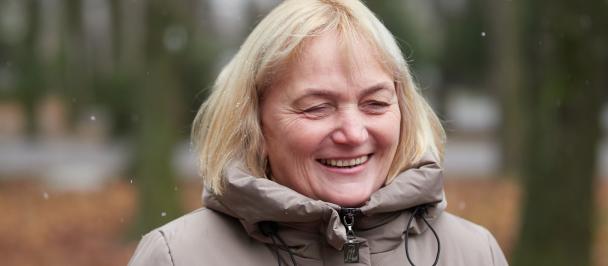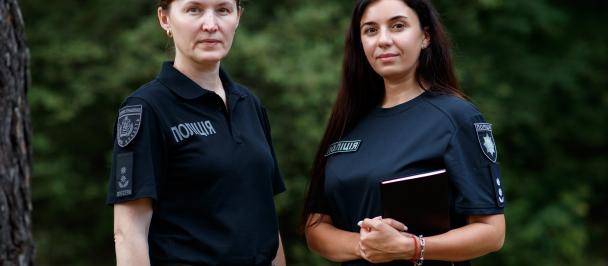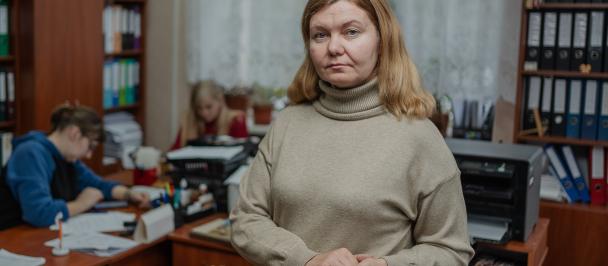Slavutych, a satellite city of the Chornobyl Nuclear Power Plant, was built 45 kilometres east of the plant after the 1986 nuclear disaster.
Slavutych: A city that is fighting for its future
April 26, 2024
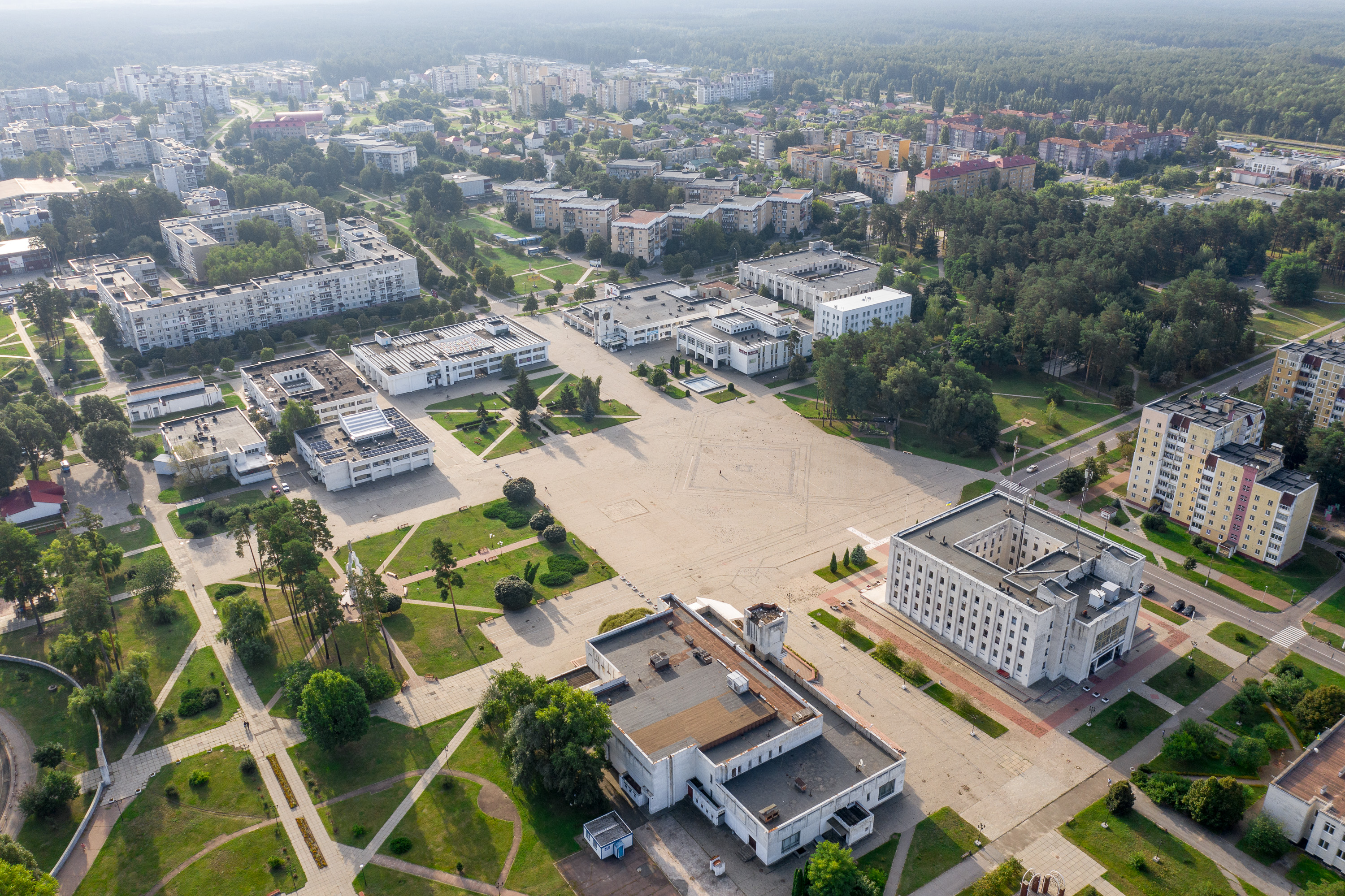
The view over the central square of Slavutych.
Just a few days after 26 April 1986, the whole world learned an ominous new name – “Chornobyl.” There had been an explosion during tests of the safety system of one of the reactors at Ukraine’s first nuclear power plant. As a result of the accident, tens of thousands of people may have become sick by radioactive fallout, and huge areas of Ukraine have been rendered uninhabitable.
Despite this, the Chornobyl nuclear power plant (NPP) had to keep producing electricity for Ukraine. Just half a year after the disaster – in October 1986 – the plant’s Reactor 1 was powered up, and at the same time a decision was made to build a new town for the station's workers to replace the town of Pripyat, which had been evacuated after the disaster.
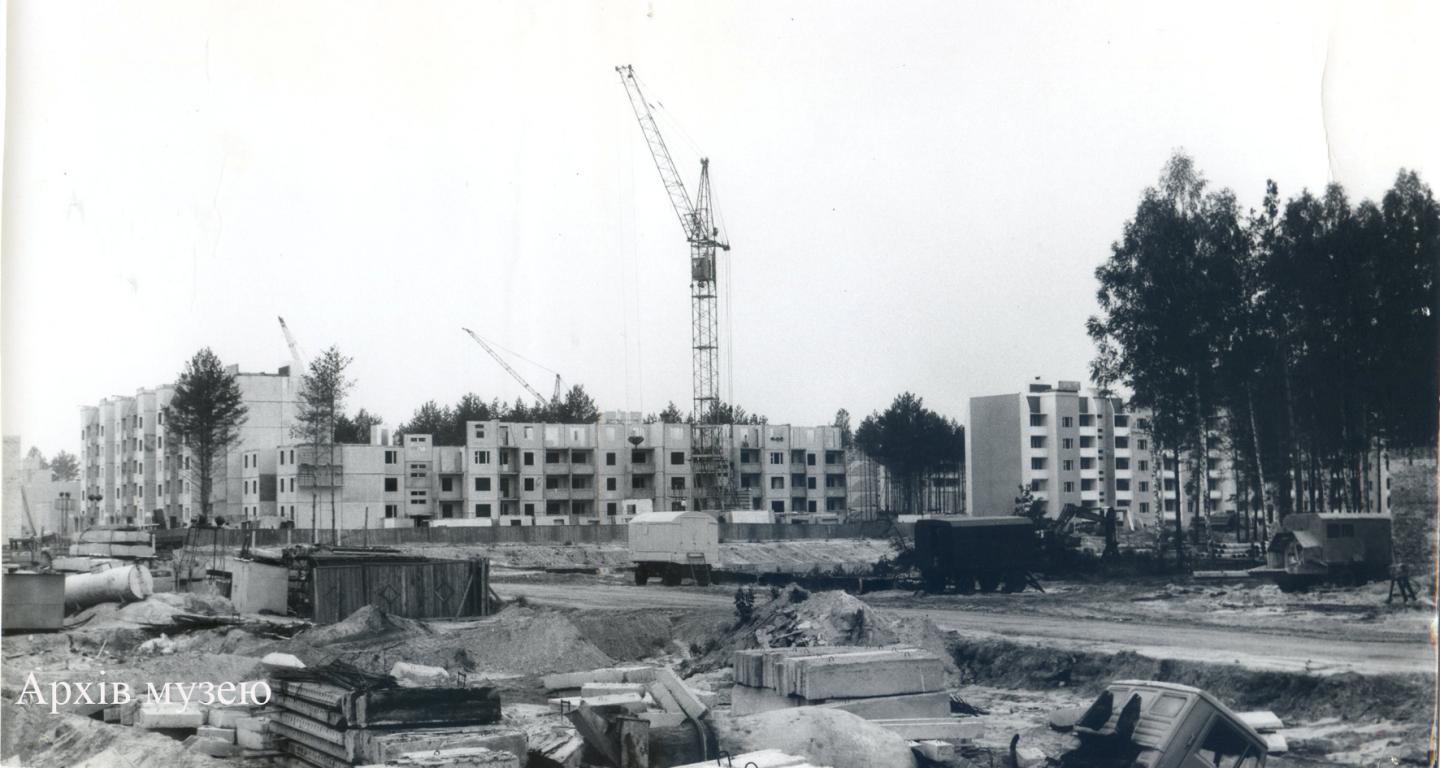
Slavutych during construction. Kyiv district. Photo: Yevhen Alimov / The GATE
The new satellite city of the Chornobyl NPP was built 45 kilometres east of the power plant, and was named Slavutych. New infrastructure, unique architectural solutions, the Polissian landscape and a young population of highly qualified nuclear engineers in fact made Slavutych a desirable place to live. However, its close connection with the Chornobyl NPP would soon cause numerous challenges for the city.
A crisis every ten years
The city faced its first deep crisis in 2000, when the last operating power unit of the Chornobyl NPP was finally shut down. The plant moved to the stage of decommissioning, and it no longer needed a large number of nuclear workers working on the production of electricity. Back then, 1,500 families left Slavutych, a town of 25,000 people at the time. The Chornobyl NPP, while not producing any energy, still had to be maintained using budget funds. Meanwhile, Slavutych rapidly diminished in significance.
The situation changed for the better thanks to the local authorities, which directed all their efforts to the development of entrepreneurship — from the creation of business incubators for beginner businesspeople, to the opening of a special economic zone in Slavutych for large economic players.
The city faced its next big challenge in the mid-2010s, when the global economic crisis was compounded by the start of the war and the completion of large-scale infrastructure projects in the exclusion zone. Again, a large number of people left Slavutych, real estate prices fell, but due to the diversification of the economy in the early 2000s the crisis was not as big of a shock for the city.
Now Slavutych is going through its third crisis in under 40 years – this time as the result of Russia’s full-scale invasion of Ukraine. The area fell under Russian occupation for just over a month, and after its liberation in April 2022 about 5,000 residents left the town.
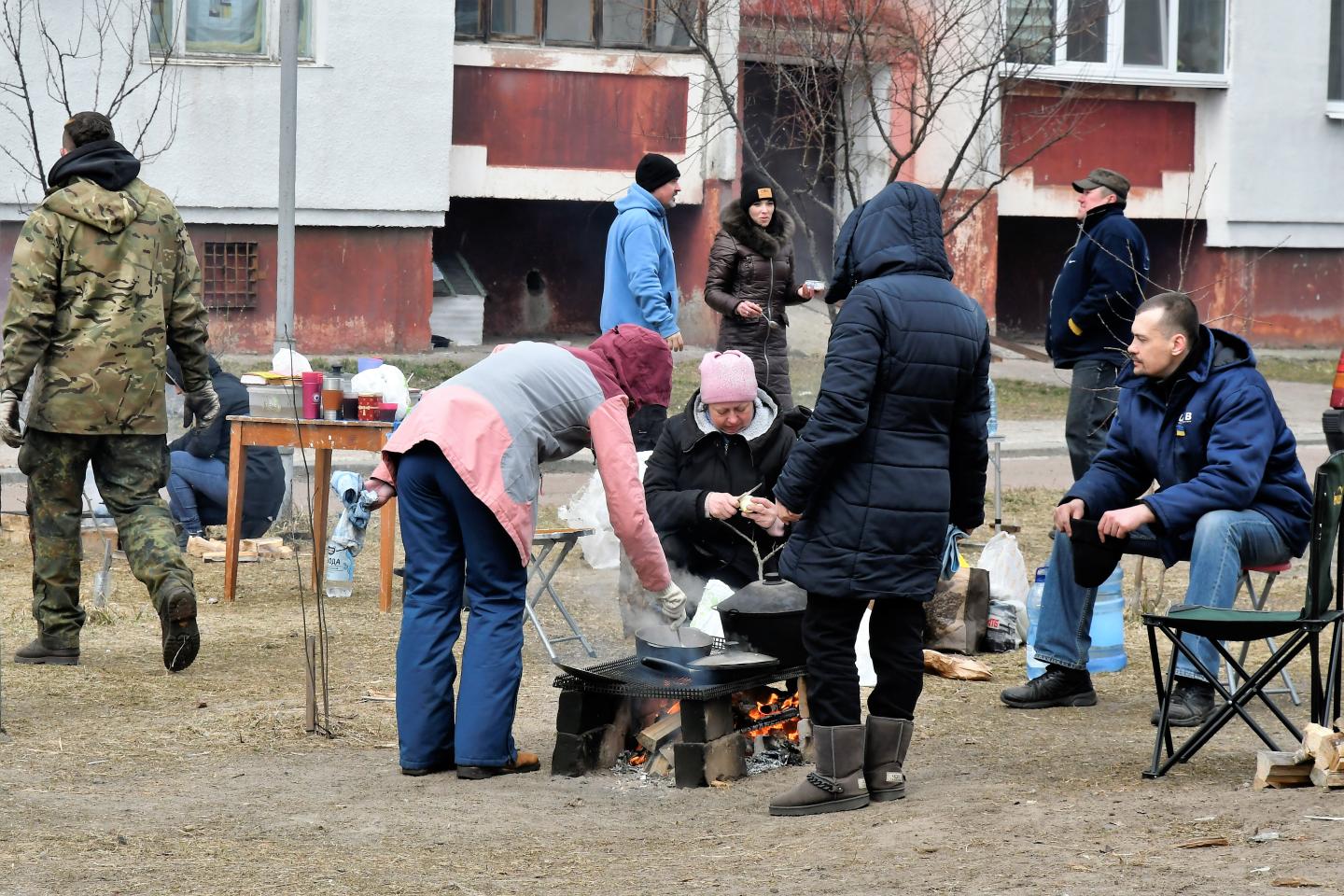
Slavutych under the Russian occupation: residents cooking food over a bonfire during a blackout. Photo: Slavutych Сity Сouncil archive.
The situation is worsened by the uncertain security situation due to the area’s proximity to the border and the destruction of direct railroad connection with the Chornobyl NPP. The journey to work, which used to take 45 minutes, can now take seven or, in some cases, 12 hours, and station personnel have been switched to shift work.
"Everything would be different for Slavutych and for all of us."
Comprehensive recovery and development plan

Portrait of Aryna Starovoitova, director of Slavutych Regional Development Agency. Photo: Bohdan Volokh.
“After liberation, it immediately became clear that everything would be different for Slavutych and for all of us,” says Aryna Starovoitova, director of the city’s Regional Development Agency.
“This is not the first challenge faced by Slavutych. We have a very strong project team, and one of the first anti-crisis decisions was to develop a Comprehensive Recovery and Development Plan that would complement the existing strategic plan of the city.”
In 2023, Slavutych, through a local initiative, joined the Mayors for Economic Growth project, which is financed by the European Union and implemented by the United Nations Development Programme (UNDP) in Ukraine. The city felt that after liberation from Russian occupation, its development strategy, which had been planned until 2027, needed significant adjustments and adaptation to the new conditions of wartime Ukraine. The main activity of the city’s initiative was the development of the above-mentioned plan.
“This plan takes stock of the existing state of the city, and also contains a list of what needs to be restored,” continues Starovoitova, “After all, the concept of restoration includes not only what is physically destroyed.”
“Firstly, depopulation became one of the key problems of our city — the population of Slavutych has decreased by 20%. This has led to an economic downturn, and we need people to either come back or new people to move in.”
“Secondly, there is a need to restore entrepreneurial activity. Businesses either did not survive and closed, or are teetering on the edge of survival. In addition, our city mainly consists of small and micro-businesses, which are currently in the most difficult situation. Our plan focuses on this problem as well. It provides assistance to businesses in attracting additional financial resources for starting and developing their own business, as well as implementing measures to improve the comfort of doing business in the territory of the Slavutych community.”
“In addition to population return and business recovery, the third focus of the comprehensive recovery and development plan is internally displaced persons. The city has identified three locations where comfortable living conditions will be created for new residents. In particular, the reconstruction of one of these locations was also financed within the framework of the Mayors for Economic Growth initiative.”
“For example, an enterprise with 15 employees relocated to our city. Their families, mothers, grandmothers, sisters and pets also moved with these people. All of them need comfortable living conditions, and we as a city should be ready to provide them with such conditions.”
From people, and for people
“One of the main tasks facing our team was to involve as many people as possible in the development of this plan,” says Starovoitova.
“The basis of the plan was a survey of more than 600 residents of Slavutych, of which 100 have their own business in the city, and 200 moved to us as internally displaced persons.”
“In addition, two large strategic sessions and a whole series of targeted ones were held with specifically defined groups of Slavutych residents, such as medical personnel, educators, activists, cultural workers, young people, deputies, and so on.”
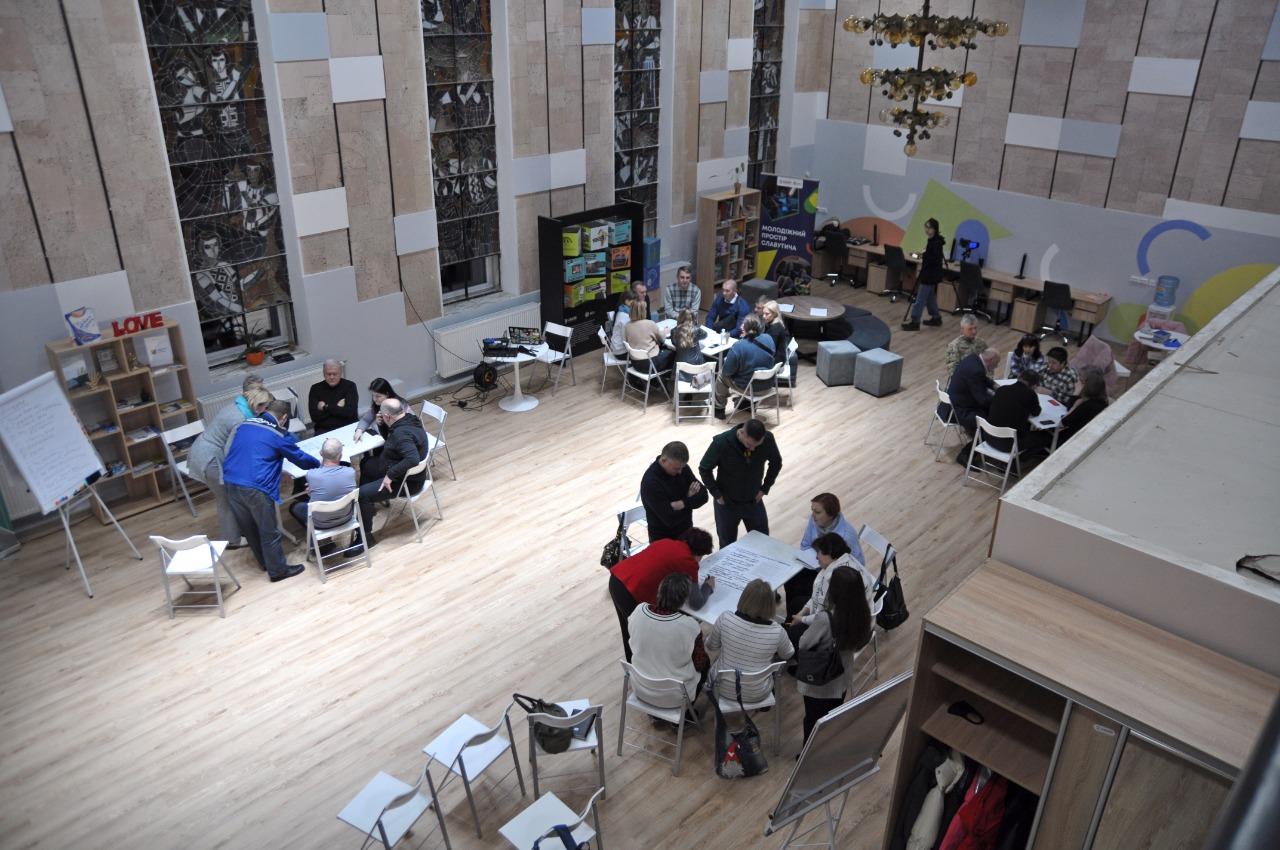
Strategic session within the framework of the EU-UNDP M4EG project in Slavutych. Photo by the Regional Development Agency of Slavutych City Council.
As a result of the surveys and strategic sessions held for each of the three goals of the plan, more than 40 project ideas were formed, as well as a specific list of steps to achieve them. The final stage on the way to the crystallization of the developed plan will be its submission for public hearings, and subsequently to a vote by the city council in May of this year.
Ukrainian municipalities, such as the city of Slavutych, are facing major challenges in the face of the full-scale invasion by Russia. For some of them, the Mayors for Economic Growth project has become a tool for overcoming the crisis, and achieving recovery and economic development.

 Locations
Locations
